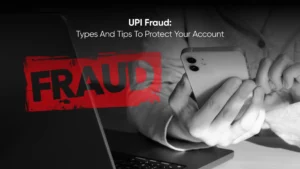Table of Contents
ToggleWhat is a Cross Cheque?
A cross cheque is a type of cheque that cannot be directly encashed over the bank counter. Instead, the amount is credited only into the bank account of the payee. You can identify a cross cheque by two parallel lines drawn on the top left corner of the cheque. Unlike an open or bearer cheque, where the holder can withdraw cash immediately, a cross cheque ensures the money is transferred through the banking system, offering more security. This simple crossing method reduces the chances of misuse or fraud and makes it a preferred option for safe financial transactions.
Importance of Using a Cross Cheque
Crossing a cheque adds an added layer of safety by ensuring the money is deposited into the payee’s bank account rather than cashed over the counter. This reduces the risk of theft, fraud, or loss.
- Security: Funds go directly into the payee’s account and makes misuse harder.
- Traceability: Creates a clear record of the transaction for easy tracking.
- Fraud Prevention: Prevents unauthorised encashment by third parties.
- Legal Protection: Serves as valid proof in case of disputes.
- Types: Cheques can be crossed generally (two parallel lines), specially (naming a bank), or marked “Account Payee”/“Not Negotiable” for added restrictions.
Also Read: Personal Loan Balance Transfer
Types of Cross Cheques in India
In India, cross cheques come in different forms, each offering a unique level of security and restriction. Knowing the types helps you choose the right one for safer and more controlled transactions.
1. General Crossing
A general crossing cheque is marked by two parallel lines across the top left or middle of the cheque. No specific bank is mentioned, which means the cheque can be deposited in any bank account. For example, if a cheque has two simple parallel lines without additional words, it is considered a general crossing. This provides flexibility while still ensuring the cheque cannot be directly encashed.
2. Special Crossing
A special crossing cheque includes not just two parallel lines, but also the name of a specific bank written between them. This restricts payment to be collected only through that bank. For example, if “HDFC Bank” is written within the crossing lines, the cheque must be deposited through HDFC Bank. This adds an extra layer of control and limits misuse.
Account Payee Crossing (Restrictive Crossing)
In this type, the words “Account Payee” or “A/C Payee Only” are written between the parallel lines. This ensures that the cheque amount is credited only to the payee’s bank account, and not to anyone else. For example, if a cheque is issued to Mr. Sharma with “A/C Payee Only” mentioned, only Mr. Sharma’s account can receive the funds. This makes the cheque non-negotiable and extremely secure, often used for salary payments, refunds, or sensitive business transactions.
4. Not Negotiable Crossing
A cheque marked “Not Negotiable” means that although it can still be transferred to another person, the transferee will not acquire better rights than the transferor. In simple terms, it limits the legal transferability of the cheque. This type of crossing safeguards against fraudulent transfers and ensures that even if misused, the rights of the true owner are protected under banking law.
What is a Blank Crossed Cheque?
A blank crossed cheque is a cheque that has only the parallel lines drawn but no additional words like “Account Payee” or bank names. It is safer than an open cheque because it cannot be directly encashed over the counter, but still flexible enough to be deposited into any account. For instance, if a company issues blank crossed cheques to vendors, those cheques can be deposited into the vendors’ bank accounts, ensuring secure transactions while avoiding unauthorized cash withdrawals.
How to Fill a Cross Cheque Correctly (with Sample)
Filling a cross cheque correctly is important to ensure your payment is processed safely. Here’s how you can do it:
Step-by-step guide:
- Take a standard cheque leaf from your cheque book.
- Draw two parallel lines at the top left corner of the cheque.
- For a general crossing, leave it blank between the lines.
- For an account payee crossing, write “A/C Payee Only” between the lines.
- For a special crossing, write the specific bank’s name between the lines.
- Fill in the payee’s name, amount (in words and numbers), date, and sign the cheque.
Cross Cheque Sample

This ensures that the cheque is processed securely and only the intended payee gets the money.
Common Rules and Validity of a Cross Cheque in India
A crossed cheque has two parallel lines on it, which means it can only be deposited into a bank account and not cashed over the counter. Adding words like “Account Payee” or “Not Negotiable” makes it even more secure by ensuring funds go only to the intended recipient.
Key Rules:
- Bank Deposit Only: Must be deposited into an account, not withdrawn in cash.
- No Transfer: Cannot be endorsed or passed on to a third party.
- Not Negotiable: Protects against misuse, even if lost or stolen.
- Traceable: Provides a clear record of payment for disputes.
- Drawer’s Control: The issuer can cancel the crossing if needed.
Validity:
- Cheques are valid for 3 months from the date of issue.
- After this, they become stale, and banks won’t honor them.
- The drawer can re-validate by updating the date or re-issuing.
Differences Between Cross Cheque and Bearer Cheque
While both bearer and cross cheques are common in India, they work very differently in terms of security, payment method, and transferability. Understanding their differences helps you choose the right option for your needs.
Factor | Bearer Cheque | Crossed Cheque |
Who can cash it | Anyone who presents the cheque at the bank. | Only the named payee whose name appears on the cheque. |
Risk | High risk. If lost or stolen, anyone can encash it. | Low risk. Funds go directly into the payee’s account, reducing misuse. |
Payment | Can be paid directly over the counter in cash. | Cannot be cashed. It must be deposited into a bank account. |
Transferability | Transferable by simple delivery, no endorsement required. | Transferable through endorsement and delivery, but always via bank deposit. |
Purpose | Best for quick cash withdrawals or small, immediate transactions. | Best for large transactions where safety, security, and traceability are important. |
Also Read: 6 Effective Strategies Against Loan Scams
Conclusion
A cross cheque is a simple yet powerful tool for secure banking. Compared to bearer cheques, it offers higher security, better traceability, and compliance with banking norms. The money goes straight into the payee’s account, creating a clear record and reducing the chances of misuse. Whether you’re paying for personal needs or business expenses, crossing a cheque is a simple step that makes your transaction far more secure.
Frequently Asked Questions
Can A Cross Cheque Be Cashed At The Bank Counter?
No, a crossed cheque cannot be encashed at the bank counter. It must be deposited into a bank account. The two parallel lines on the cheque instruct the bank to transfer funds only to the named payee’s account, ensuring the money reaches the right person safely.
Is It Possible To Uncross A Crossed Cheque?
No. A payee cannot uncross a crossed cheque. Only the drawer can do so by writing “Crossing Cancelled”, but this is discouraged as it removes the security and increases fraud risk.
What Are The Advantages Of An Account Payee Crossing Over General Crossing?
An Account Payee crossing offers added security by ensuring the money goes only into the payee’s bank account, preventing anyone else from cashing or misusing the cheque.
Can A Blank Crossed Cheque Be Misused? How To Avoid It?
Yes, a blank crossed cheque can be misused since someone could fill in a large amount and encash it. To stay safe, never hand over a blank signed cheque. Always fill in the date and amount, use ‘Account Payee Only’ for added security, or share a cancelled cheque if it’s only for verification.
How Long Is A Cross Cheque Valid In India?
A crossed cheque in India is valid for three months from the date of issue. After this, it becomes invalid and cannot be processed by the bank. The validity period is the same for all cheques, including crossed cheques, due to RBI guidelines.
What Happens If A Crossed Cheque Is Lost Or Stolen?
If your crossed cheque goes missing or is stolen, inform your bank right away to place a stop-payment request. Also, file a police complaint to safeguard against fraud and create an official record of the loss.









